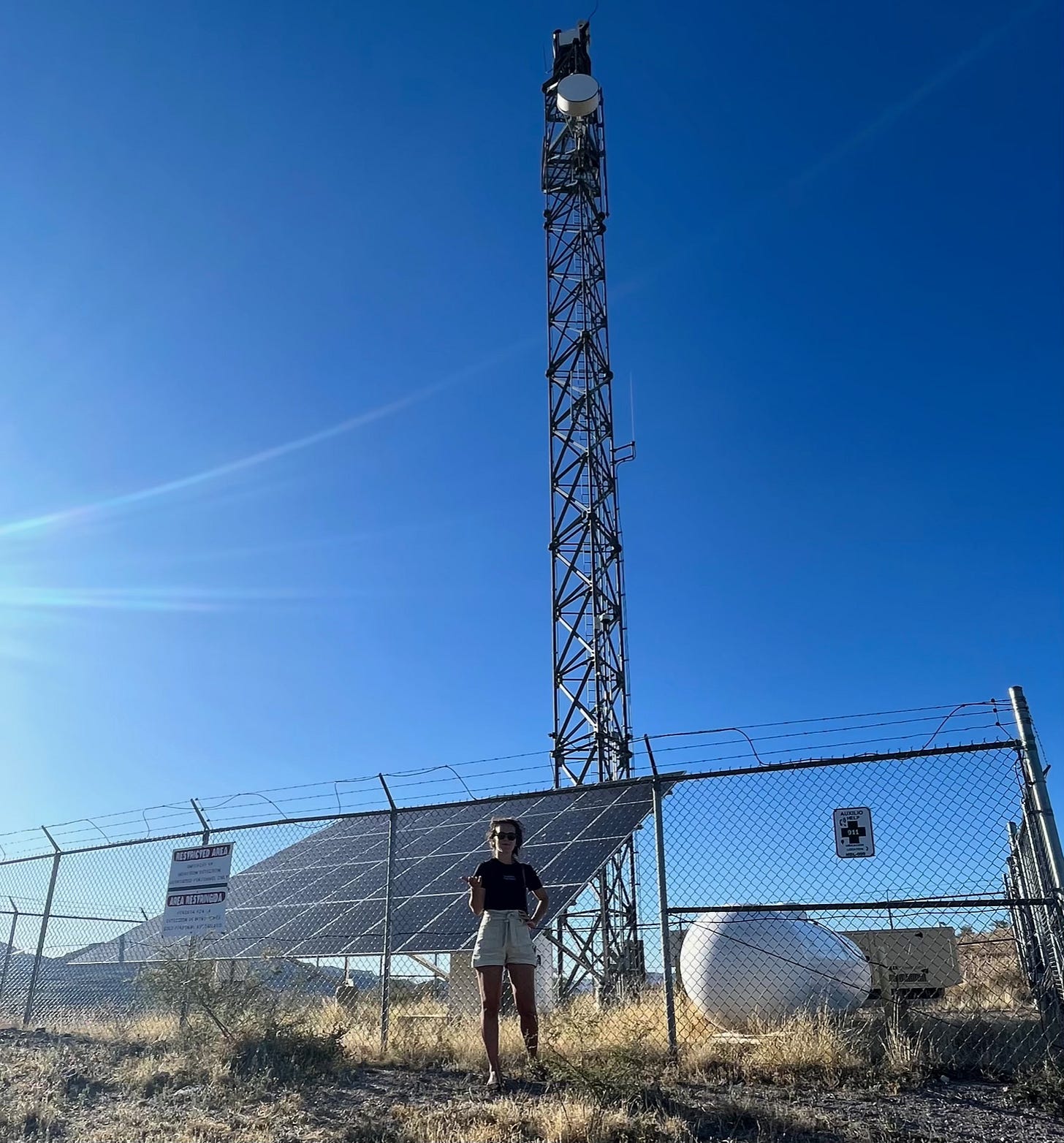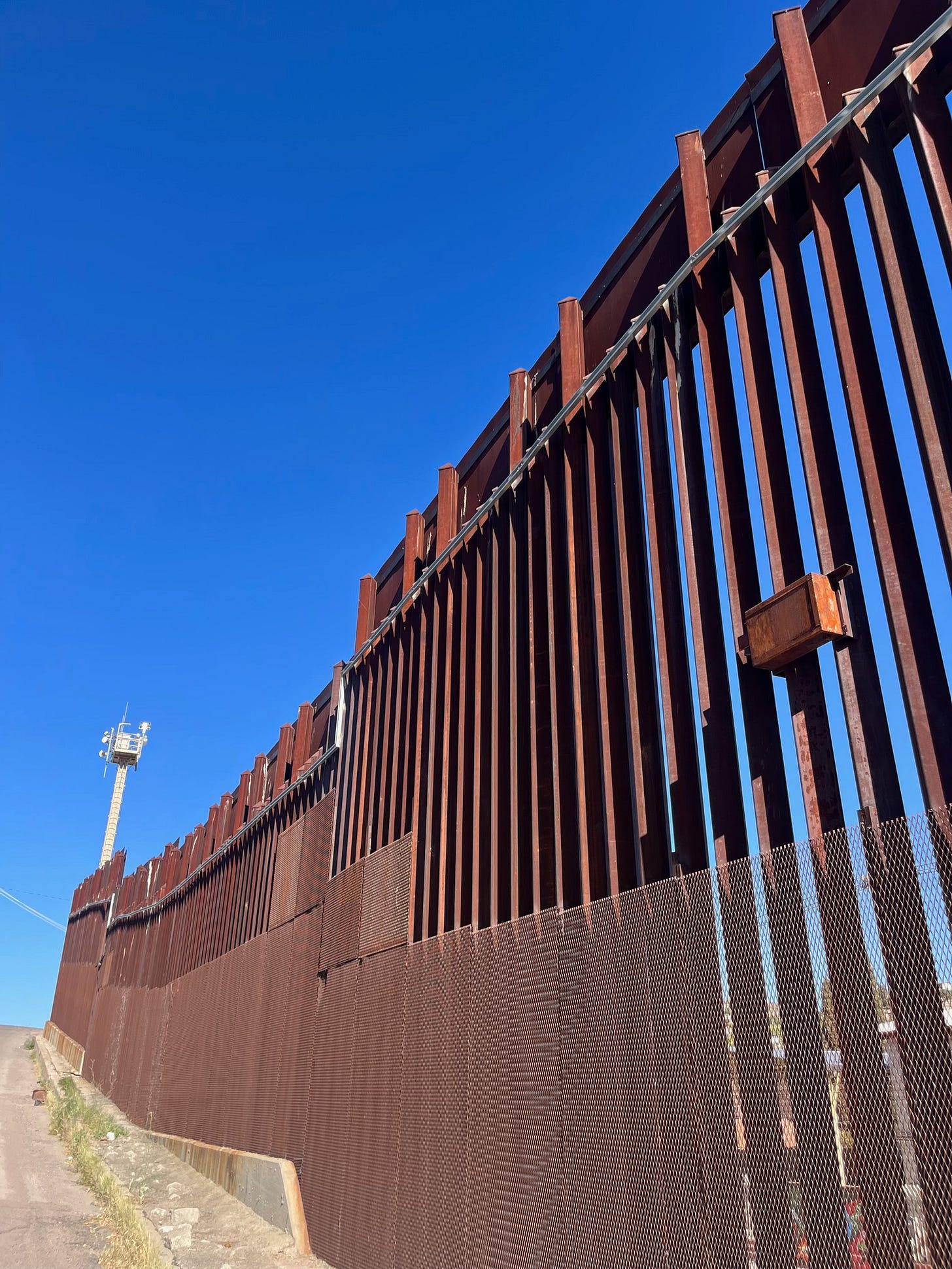
Last week I attended the 17th annual Border Security Expo in El Paso, Texas, which focused on border enforcement technology. I mention this because I can’t think of a better person to talk to about this than anthropologist and lawyer Petra Molnar, whose new book, The Walls Have Eyes: Surviving Migration in the Age of Artificial Intelligence, is hot off the presses. I’ve been awaiting this book for years, and I was fortunate enough to interview Molnar for this podcast while she was in Tucson for a book event.

It is essential to know about border technology and its evolution, and how it affects people crossing borders and people living in borderlands around the world. Molnar, on the leading edge of reporting and analysis on this issue, helps us understand how border tech connects to larger political and economic power structures, and how it is not a humane alternative to a wall.
She splits her time across the hemispheres, in North America and Europe, which brings a global perspective to the book, and underscores the omnipresence of surveillance. And this is not Molnar’s first appearance at The Border Chronicle, check out her article on robotic dogs from 2022. You should also see her work at the Migration Tech Monitor and the Refugee Law Lab.
After we recorded the podcast, we took a trip to the border in Nogales. Lengthwise across the bollards was a narrow metal track that looked exactly like the encasement for a sensor system that I saw displayed by a company at the Border Security Expo. It was the first time I had seen this addition to the wall. Indeed, the walls do have eyes.













